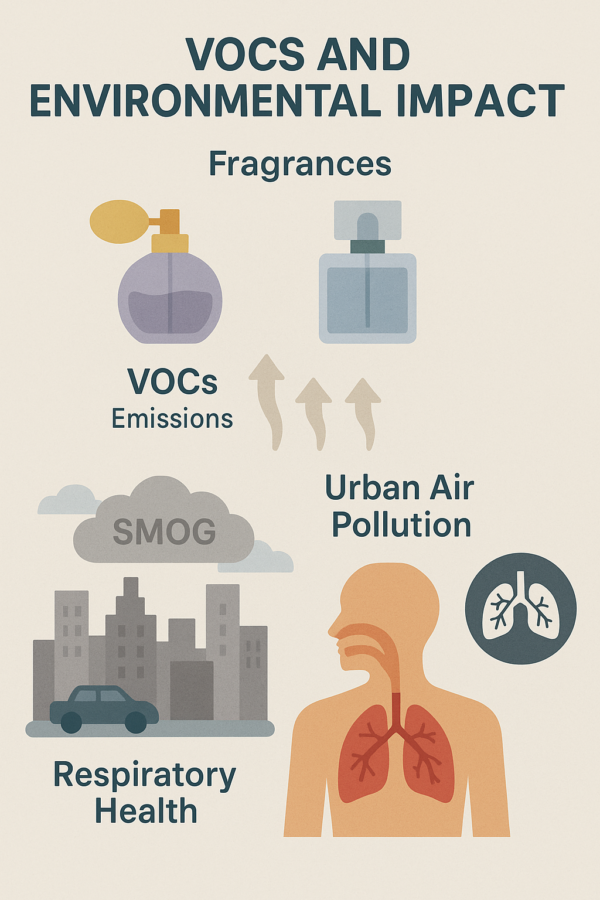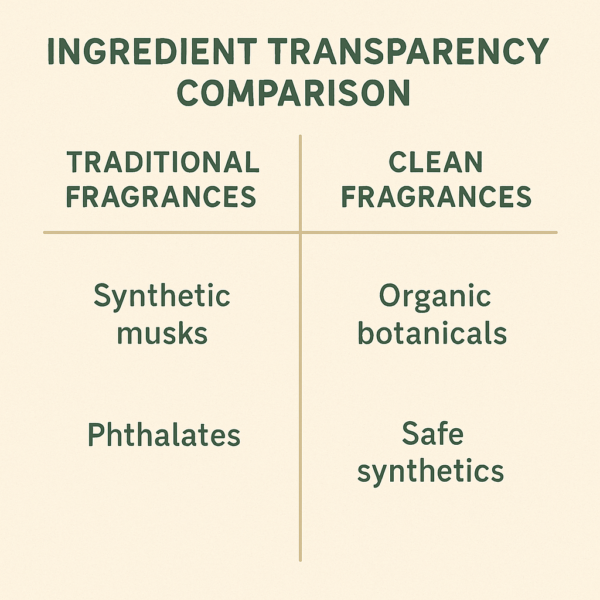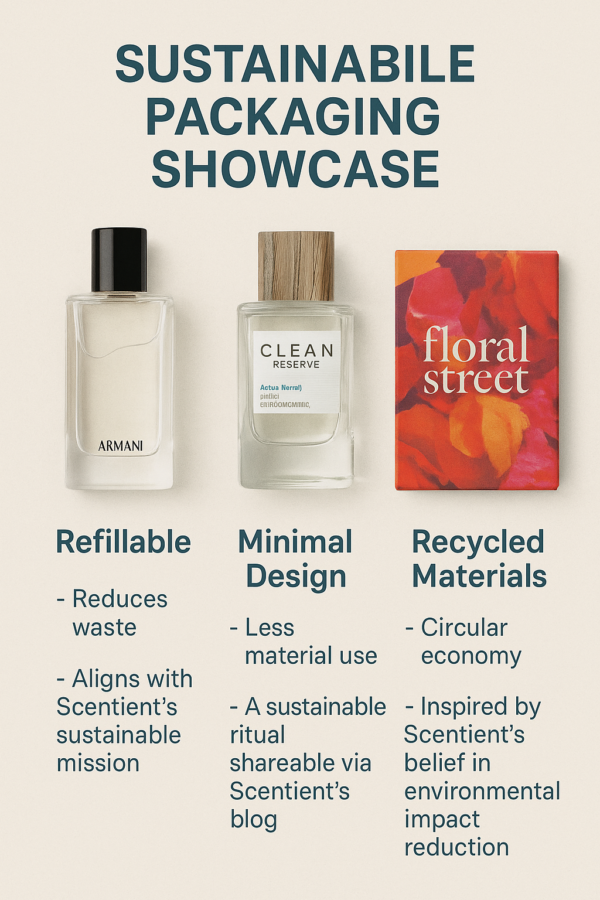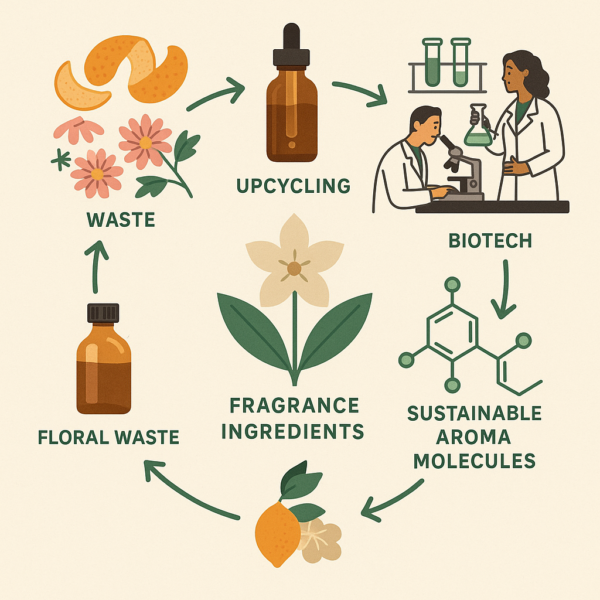How Clean Fragrances Protect Our Planet: A Guide to Sustainable Scents
Fragrances have the magical power to uplift moods and evoke cherished memories, but did you know your favorite perfume could impact the environment? As awareness grows, more consumers are turning toward clean fragrances, which are crafted with sustainability and safety in mind. In this guide, we’ll explore how choosing clean fragrances can help protect our planet.

Understanding the Environmental Impact of Traditional Fragrances
What Are VOCs, and Why Do They Matter?
Volatile Organic Compounds (VOCs) are chemicals released when fragrances evaporate. Studies reveal that these VOCs contribute significantly to urban air pollution, rivaling emissions from vehicles. VOCs interact in the atmosphere to form smog and particulate matter, harming both air quality and human health.
The Issue of Non-Biodegradable Ingredients
Traditional fragrances often contain synthetic musks and phthalates, which persist in the environment, accumulating in water and soil. These substances can harm wildlife and disrupt ecosystems, raising long-term ecological concerns.

The Rise of Clean Fragrances: What Makes Them Different?
Ethically Sourced and Transparent Ingredients
Clean fragrance brands prioritize ethically sourced, sustainable ingredients. They opt for natural ingredients grown organically or synthetically derived ingredients made safely using green chemistry. Brands like Henry Rose and Abel Odor exemplify transparency by clearly listing all their ingredients, reassuring consumers about safety and sustainability.
Safe Synthetics and Green Chemistry
Clean fragrances aren’t necessarily 100% natural but emphasize safe synthetics—ingredients proven to be non-toxic and environmentally friendly. The adoption of green chemistry ensures fragrance production avoids harmful chemicals, focusing instead on biodegradable and ecologically harmless materials.
Innovations in Clean Fragrance Manufacturing
Renewable Energy and Green Production Practices
Sustainable fragrance brands integrate renewable energy sources, such as solar power, and employ production methods like solvent-free extraction and carbon capture. Air Company, for instance, utilizes captured CO₂ to produce fragrance alcohol, demonstrating revolutionary carbon-negative production.
Small-Batch and Artisanal Production
Producing fragrances in smaller, controlled batches helps clean brands significantly reduce waste and minimize environmental footprints. Artisanal approaches ensure that manufacturing processes align closely with demand, thus preventing excess waste.

Sustainable Packaging: Reducing Fragrance’s Environmental Footprint
Refillable Perfume Bottles
Refillable packaging dramatically cuts waste and carbon emissions. Brands like Armani and Guerlain have successfully implemented refill programs, significantly reducing glass, plastic, and cardboard usage.
Recycled and Minimalist Packaging
Brands such as Clean Reserve and Floral Street are adopting recycled, recyclable, and biodegradable materials for their packaging, emphasizing minimalism and eco-friendly design. These efforts substantially lower environmental impacts compared to conventional perfume packaging.
Why Consumers Are Choosing Clean Fragrances
Growing Demand for Transparency and Health
Surveys indicate that 81% of consumers prioritize ingredient transparency, and a significant portion are willing to pay more for sustainable products. Clean fragrances align perfectly with these preferences, offering hypoallergenic and non-toxic alternatives that appeal to health-conscious individuals.
Ethical Consumerism and Wellness Trends
The clean fragrance movement is part of a broader shift towards ethical consumerism and wellness. Consumers now seek products that align with their values on environmental sustainability, animal welfare, and personal health, making clean fragrances increasingly popular.

The Future of Fragrance: Innovation and Sustainability
Biotechnology and Upcycled Ingredients
The fragrance industry is increasingly using biotechnology to sustainably produce aroma compounds identical to natural ingredients. Upcycling—repurposing waste products from other industries into fragrance ingredients—also represents an exciting frontier, combining sustainability and innovation.
Industry Leadership and Collaboration
Major fragrance houses like Givaudan and Firmenich lead the way in adopting ethical sourcing and green chemistry, influencing the entire industry toward sustainability. Collaboration across the supply chain further supports the industry’s shift to sustainable practices.
Conclusion: Making a Difference With Your Fragrance Choices
Choosing clean fragrances allows consumers to enjoy luxurious scents without compromising their values or the environment. By understanding the impact of their choices, fragrance enthusiasts can actively participate in protecting planetary health, promoting sustainability, and shaping a cleaner, greener future for the perfume industry.
Interested in exploring clean fragrances further? Subscribe now to Scentient Perfume and join our journey toward sustainable luxury.
